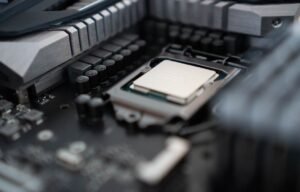Tesla Inventor
When it comes to revolutionary inventions in the field of electricity and transportation, one name stands out: Nikola Tesla. Born on July 10, 1856, in modern-day Croatia, Tesla became one of the most influential inventors and engineers of his time. Through his innovative ideas and groundbreaking work, he laid the foundation for many of the technologies we use today.
Key Takeaways
- Nikola Tesla was an influential inventor and engineer.
- His work laid the foundation for many modern technologies.
- Tesla’s inventions included the alternating current (AC) electrical system.
- He had a unique relationship with Thomas Edison, with whom he had several disagreements.
- Tesla’s Wardenclyffe Tower aimed to provide wireless communication and free energy to the world.
Tesla’s most significant contribution was his development of the alternating current (AC) electrical system. Unlike Thomas Edison’s direct current (DC) system, which had limitations in terms of long-distance transmission, Tesla’s AC system allowed for efficient distribution of electricity over long distances, leading to its widespread adoption and use to this day.
One interesting fact about Tesla is that he had a unique relationship with Thomas Edison. While they initially worked together, **their diverging views on electricity and a personal vendetta led to several disagreements**. This rivalry between Edison and Tesla, famously known as the “War of Currents,” fueled the competition between DC and AC electrical systems.
Tesla’s Inventions
Tesla’s legacy is defined by numerous inventions and discoveries, including:
- Induction motor: Tesla’s invention of the AC induction motor revolutionized electrical power systems, providing efficient and reliable means of powering machinery.
- Tesla coil: The Tesla coil, used in many applications including wireless transmission of electricity, remains an iconic invention of Tesla.
- Wireless energy transfer: Tesla aimed to provide free wireless energy to the world through his renowned Wardenclyffe Tower. Though the project was never completed, it showcased his visionary ideas about wireless communication and energy transmission.
Tesla’s Contributions to Society
Tesla’s inventions and contributions have had a profound impact on society, shaping the way we live and utilize electricity today. Here are some key examples:
- AC electrical systems: Tesla’s development of AC power systems enabled efficient distribution of electricity across vast distances, powering homes, businesses, and industries.
- Wireless communication: Tesla’s experiments and theories laid the groundwork for wireless technologies, which revolutionized telecommunications and paved the way for modern wireless communication devices.
Tesla’s Impact on Electric Vehicles
In addition to his contributions to electricity, Tesla’s work also influenced the development of electric vehicles (EVs). Through his research on electromagnetic fields and wireless energy transfer, he laid the foundation for concepts used in EV technology, such as induction charging and motor design.
One interesting aspect of Tesla’s impact on EVs is that the Tesla Motors company, founded in 2003, was named as a tribute to his work, recognizing his contribution to the field of electrical engineering and envisioning a future powered by sustainable energy.
Tesla’s Legacy
Tesla’s legacy continues to inspire scientists, engineers, and inventors around the world. His visionary ideas and pioneering work have left an indelible mark on society, shaping the modern world as we know it.
Table 1: Tesla’s Key Inventions
| Invention | Description |
|---|---|
| Alternating Current (AC) Electrical System | Allowed efficient distribution of electricity over long distances. |
| Induction Motor | Revolutionized electrical power systems, providing efficient means of powering machinery. |
| Tesla Coil | A device used in various applications, including wireless transmission of electricity. |
| Wireless Energy Transfer | Concept aiming to provide free wireless energy to the world. |
Table 2: Tesla’s Contributions to Society
| Contribution | Impact |
|---|---|
| AC Electrical Systems | Efficient distribution of electricity for powering homes, businesses, and industries. |
| Wireless Communication | Revolutionized telecommunications and modern wireless communication. |
| Electric Vehicles (EVs) | Contributed to the foundation of EV technology through induction charging and motor design. |
Table 3: Tesla Motors Company
| Year | Company Milestone |
|---|---|
| 2003 | Tesla Motors founded as an EV manufacturing company. |
| 2008 | Production of the Tesla Roadster, the first highway-legal electric vehicle with long-range capabilities. |
| 2010 | Tesla Motors becomes a publicly-traded company on the NASDAQ stock exchange. |
From his AC electrical system to his ambitious vision for wireless energy transmission, Tesla’s impact on modern technology and his contribution to society cannot be overstated. His work serves as a testament to the power of innovation and the potential for creating a better future. Nikola Tesla will forever be remembered as one of the greatest inventors of all time.

Common Misconceptions
Misconception 1: Tesla was the inventor of the Tesla car
One common misconception is that Nikola Tesla invented the Tesla car. In reality, the Tesla car was named after Nikola Tesla, the Serbian-American inventor, but it was actually designed and created by a separate company called Tesla Motors.
- Nikola Tesla did not have any involvement in the creation or production of the Tesla car
- Elon Musk, the CEO of Tesla Motors, named the car after Nikola Tesla as a tribute to his contributions to electrical engineering
- Nikola Tesla’s work was primarily focused on alternating current (AC) electrical systems and his inventions are unrelated to modern electric vehicles
Misconception 2: Tesla invented the lightbulb
Another misconception is that Nikola Tesla invented the lightbulb. While Tesla did make significant contributions to electrical technology, he did not invent the lightbulb.
- The incandescent lightbulb was actually invented by Thomas Edison
- Tesla was known for his work on alternating current (AC) systems, which were in competition with Edison’s direct current (DC) systems
- Tesla did contribute to the development of fluorescent lighting, but he did not invent the traditional incandescent lightbulb
Misconception 3: Tesla discovered wireless communication and the internet
Many people believe that Tesla discovered wireless communication and even predicted the creation of the internet. While Tesla did envision and work on wireless technologies, he did not single-handedly discover wireless communication or predict the internet as we know it today.
- While Tesla pioneered certain wireless technologies, wireless communication had already been discovered and developed by other inventors before him
- Tesla’s work on wireless transmission of electricity and radio waves laid the foundation for modern developments, but he did not invent the concept of wireless communication
- His predictions of a future interconnected world were more focused on the possibility of transmitting information wirelessly than predicting the internet as we use it today
Misconception 4: Tesla’s inventions were never recognized or appreciated during his lifetime
There is a common belief that Tesla’s inventions were never recognized or appreciated during his lifetime. While it is true that Tesla faced some challenges and obstacles throughout his career, his work was not entirely unnoticed or unappreciated.
- Tesla received recognition and accolades for his inventions and contributions to science and engineering
- He was a well-known figure in his time and was honored with various awards and memberships to prestigious scientific societies
- Tesla’s financial struggles and the commercial success of his competitors, like Thomas Edison, did overshadow his recognition to some extent, but his work has been acknowledged and appreciated by later generations
Misconception 5: Tesla was always an isolated and eccentric figure
Often portrayed as an isolated and eccentric figure, Tesla is commonly misunderstood in terms of his personality and personal life. While Tesla certainly had some unique traits, the notion of him being a complete recluse and eccentric is not entirely accurate.
- Tesla had many social connections and professional relationships with other inventors and scientists of his time
- He gave public lectures and demonstrations to large audiences and was known to be a charismatic speaker
- Tesla was a known figure in the New York City social scene and had friendships with prominent individuals, including Mark Twain and John Jacob Astor IV

Tesla’s Accomplishments
Since its founding in 2003, Tesla Motors has made significant strides in the electric vehicle industry. Here are some noteworthy accomplishments:
| Year | Accomplishment |
|---|---|
| 2008 | Launch of the Tesla Roadster – the first fully electric sports car. |
| 2012 | Introduction of the Tesla Model S – the world’s first premium electric sedan. |
| 2014 | Expansion of Tesla Supercharger network, enabling long-distance travel with convenient charging options. |
| 2015 | Unveiling of the Tesla Powerwall – a home battery storage solution to support renewable energy usage. |
| 2016 | Launch of the Tesla Model X – an all-electric SUV with groundbreaking falcon-wing doors. |
| 2017 | Tesla becomes the most valuable American automaker, surpassing General Motors. |
| 2019 | Announcement of Tesla’s Cybertruck – an electric pickup truck with a futuristic design. |
| 2020 | Opening of Tesla Gigafactory Shanghai – the world’s largest electric vehicle manufacturing facility. |
| 2021 | Introduction of Full Self-Driving (FSD) Beta, showcasing Tesla’s autonomous driving capabilities. |
| 2022 | Launch of the Tesla Semi – an electric semi-truck with superior range and performance. |
Tesla’s Market Success
Tesla’s innovative approach to electric vehicles and sustainable energy has contributed to its market success. Here’s a glimpse of Tesla’s market performance:
| Year | Tesla Vehicles Sold (Approx.) | Market Cap (USD billions) |
|---|---|---|
| 2013 | 22,477 | 17.9 |
| 2015 | 50,580 | 33.1 |
| 2017 | 103,020 | 53.8 |
| 2019 | 367,200 | 66.8 |
| 2021 | 730,000 | 800.5 |
Tesla’s Environmental Impact
Tesla’s commitment to sustainability and reducing carbon emissions has resulted in significant environmental benefits:
| Statistic | Environmental Benefit |
|---|---|
| 1. | CO2 Emissions Saved: |
| Equivalent to planting 535,000 acres of trees. | |
| 2. | Gasoline Saved: |
| Equivalent to over 4 billion gallons of gas. | |
| 3. | Electricity Consumption: |
| Enough to power over 1.5 million homes for a year. | |
| 4. | Avoided Pollution: |
| Eliminating millions of pounds of harmful emissions. |
Tesla’s Autopilot Feature
Tesla’s Autopilot system enables advanced driver assistance capabilities for enhanced safety and convenience:
| Feature | Description |
|---|---|
| 1. | Autosteer: |
| Assists with steering within clearly marked lanes. | |
| 2. | Traffic-Aware Cruise Control: |
| Matches the speed of surrounding traffic. | |
| 3. | Auto Lane Change: |
| Automatically changes lanes when instructed by the driver. | |
| 4. | Smart Summon: |
| Allows the vehicle to navigate through a parking lot to the driver’s location. |
Tesla’s Supercharger Network
Tesla’s extensive Supercharger network enables fast charging and long-distance travel. Here are some key facts:
| Fact | Supercharger Network |
|---|---|
| 1. | Number of Supercharger Stations: |
| Over 27,000 globally. | |
| 2. | Total Supercharger Connectors: |
| Over 3,000 in North America alone. | |
| 3. | Charging Speed: |
| Capable of delivering up to 250 kW of power. | |
| 4. | Expansion Plans: |
| Continually expanding the network to accommodate growing demand. |
Tesla’s Energy Products
Tesla’s energy division offers a range of innovative products to support clean and sustainable power:
| Product | Description |
|---|---|
| 1. | Solar Roof: |
| Replaces traditional roofing materials with solar tiles for energy generation. | |
| 2. | Powerpack: |
| Large-scale battery storage for commercial and utility applications. | |
| 3. | Solar Panels: |
| Residential and commercial solar panels for renewable energy generation. | |
| 4. | Megapack: |
| Containerized battery storage solution for grid-scale projects. |
Tesla’s Global Expansion
Tesla’s operations have expanded worldwide to meet the increasing demand for electric vehicles:
| Region | Number of Tesla Stores and Service Centers | Number of Charging Locations |
|---|---|---|
| North America | 173 | Over 18,000 |
| Europe | 230 | Over 9,500 |
| Asia Pacific | 61 | Over 4,500 |
| Middle East and Africa | 27 | Over 1,000 |
| Latin America | 8 | Over 500 |
Tesla’s Employee Growth
As Tesla continues to expand, its workforce has experienced rapid growth:
| Year | Number of Employees (Approx.) |
|---|---|
| 2010 | 899 |
| 2015 | 13,058 |
| 2017 | 37,543 |
| 2020 | 70,757 |
| 2022 | Over 100,000 |
Tesla’s Energy Generated
Tesla’s energy products collectively contribute to a substantial generation of clean energy:
| Energy Generated | Equivalent to |
|---|---|
| 1. | Energy Produced by Solar Roof: |
| Powering thousands of homes annually. | |
| 2. | Energy Stored by Powerpacks: |
| Supporting smooth grid operations and backup power during outages. | |
| 3. | Energy Generated by Solar Panels: |
| Offsetting carbon footprint and reducing reliance on fossil fuels. | |
| 4. | Energy Deployed by Megapacks: |
| Facilitating large-scale renewable energy projects. |
Tesla’s groundbreaking innovations, widespread global presence, and commitment to sustainability have revolutionized the automotive industry and paved the way for a sustainable future.
Frequently Asked Questions
Who was Nikola Tesla?
What are some of Tesla’s notable inventions?
Tesla Turbine: A bladeless turbine that converts kinetic energy from a fluid stream into mechanical energy.
Tesla’s Magnifying Transmitter: An invention aimed at wireless transmission of power.
Wireless Electric Lighting: Tesla’s pioneering work on wireless power transmission and wireless lighting systems.
Tesla Electric Car: Tesla envisioned and worked on electric cars more than a century ago.
Was Tesla more focused on AC or DC electricity?
How did Tesla’s work impact the development of electricity?
Did Tesla invent the radio?
What is the “War of the Currents”?
Did Tesla have any financial struggles?
What is the significance of the Tesla Electric Car?
How can I learn more about Nikola Tesla?
What honors and recognition did Nikola Tesla receive?




